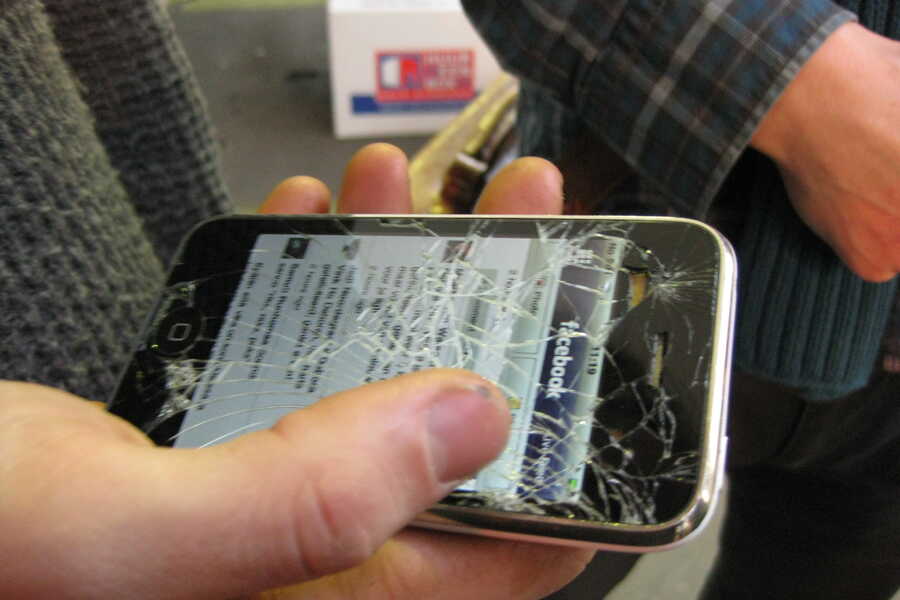Already two thousand years ago man had set out to make unbreakable glass. According to a legend taken down by the archbishop Isadore of Seville the Roman emperor Tiberius Caesar was presented a vessel made of unbreakable glass. Writers at the time called it 'vitrum flexile' or flexible glass. As Caesar threw the cup to the floor it did not shatter. When questioned, the inventor swore to the emperor that only he knew how it was made. Whereupon Caesar had the man beheaded, and his workshop destroyed, fearing such a material would undermine the value of silver and gold. Nobody can say if that glassmaker had made some kind of shockproof glass avant la lettre.
Here is what The Corning Museum of Glass says about this story: "Some think that vitrium flexile was merely describing "bent" glass, and that the man had designed some new style of hollow-handled vessel. However more than this would have been needed to impress the Roman establishment, used as it was to vessels of great intricacy. A better explanation would seem to be that the glass worker really had stumbled upon a primitive kind of shock-resistant glass. (Note by CMOG: Perhaps this is just a tale; it doesn't have to be true!)
Ordinary glass is based on silicon dioxide (sand), sodium carbonate (soda) and calcium carbonate (limestone), a type of glass often called soda-lime glass. To modify glass into relative unbreakability requires a radical change to the formulation. The essential new ingredient is a few percent of boric oxide. So could our unknown glassmaker have had access to either boric acid or borax, both of which occur naturally?
In the Middle Ages borax was regularly imported into Europe from the East to be used as a flux by goldsmiths. It came from the remote regions of Tibet. Could a little have found its way to ancient Rome 1500 years earlier? Maybe. There was a flourishing trade in those days between the Roman Empire and the Indian sub-continent. If so, our glassmaker may have bought some borax and noted its remarkable effect when added to the glass batch.
However there were two potential sources much nearer home. The steam vents of the Tuscan Maremma north of Rome, contained natural boric acid. Geologists did not establish this fact until the 1820's, but it is surely possible that our ill-fated glassmaker came upon some unusual looking crystal salts in a dried-up Tuscan pool and decided to see if they had any effect on glass. The Romans possessed even richer sources of borates elsewhere within the Empire - in (what is now called) Turkey. These, too, were unknown until the nineteenth century, but again it is possible that boron-containing material from north-west Anatolia (modern Turkey) found its way into the glassmaker's batch - mistaken, perhaps, for some form of silica.
Boron has the wonderful gift of being able to change the number of chemical bonds it can make. The boron-oxygen bond is itself astonishing strong, but true boric oxide can make only three bonds. However, if more oxygen is added - sodium oxide, for example - it can make four bonds. This imparts great three-dimensional strength. Add the compound to a formulation and the response to thermal shock of the resulting glass is crucially improved. It becomes heat-resistant, oven proof, and can be used for cooking, chemical apparatus, thermometers, telescopes, and a hundred other functions. The strong bonding also increases resistance to water and chemicals, so boron containing glasses are ideal for medical ampoules, laboratory instruments, floor and wall tile, even kitchen sinks."
The glass manufacturer Corning Incorporated has come close to making unbreakable glass, here is what they reveal about the process of making Gorilla Glass as they call it: "The glass is placed in a hot bath of molten salt at a temperature of approximately 400°C. Smaller sodium ions leave the glass, and larger potassium ions from the salt bath replace them. These larger ions take up more room and are pressed together when the glass cools, producing a layer of compressive stress on the surface of the glass. The special composition of Gorilla Glass enables the potassium ions to diffuse far into the surface, creating high compressive stress deep into the glass. This layer of compression creates a surface that is more resistant to damage from everyday use." And, Asahi Glass, Japan's largest glass maker, announced in January 2011 a super-tough, scratch resistant cover for gadgets that it says is six times stronger than a conventional glass, they call their glass Dragontrail. The product represents Asahi's intensified ambitions to grab a chunk of the surging global market for smartphones and tablets. All those devices need a durable sheath to protect what's inside from the bumps, nicks and falls that inevitably come with use. (Source: www.usatoday.com)
Thinking back to the unfortunate glassmaker two thousand years ago, I wonder if it is just an anecdote. Our literary man, the blessed archbishop Isadore de Seville, who wrote about unbreakable glass in Roman time, is Proposed Patron Saint of Internet Users.


